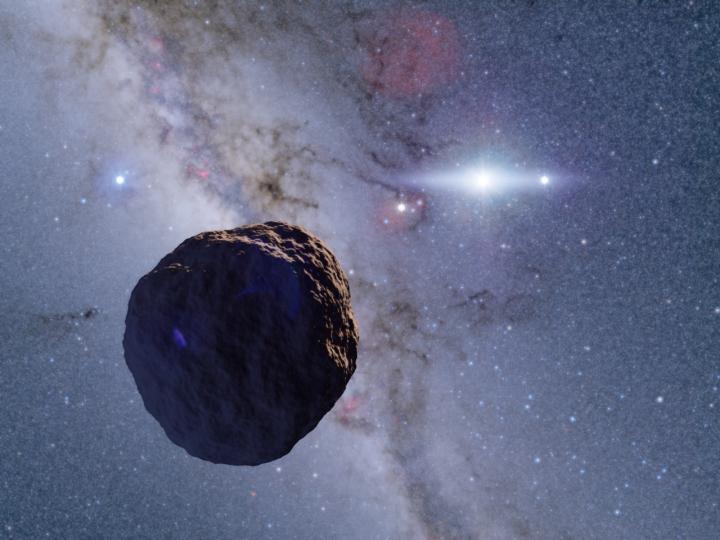Newfound Distant Space Rock May Be Missing Link of Planet Formation

The far outer solar system is teeming with mountain-size space rocks left over from the planet-formation period, a new study suggests.
Astronomers have apparently detected a 0.8-mile-wide (1.3 kilometers) object in the Kuiper Belt, the realm of icy bodies beyond Neptune's orbit. If the newfound candidate is confirmed, it would be the first Kuiper Belt object (KBO) ever known in this size range, study team members said.
Scientists have spotted many KBOs over the years. But they tend to be much larger — such as the dwarf planet Pluto or the 20-mile-wide (32 km) Ultima Thule, both of which NASA's New Horizons spacecraft has flown by — or a bit smaller (less than 0.6 miles, or 1 km, wide). [Ultima Thule in Pictures: Flyby Views of 2014 MU69 by New Horizons]
The find suggests that these mid-size KBOs are incredibly common: About 60,000 of them likely occupy every square degree of sky, the researchers calculated. (Your clenched fist held at arm's length covers about 10 degrees of sky.)
This information, in turn, may reveal key information about how planets grew and evolved long ago.
"If this is a true KBO detection, this implies that planetesimals before their runaway growth phase grew into kilometer-sized objects in the primordial outer solar system and remain as a major population in the present-day Kuiper Belt," the researchers wrote in the new study, which was published online today (Jan. 28) in the journal Nature Astronomy.
KBOs such as the newly detected candidate are too faint to be seen directly, even by the most powerful telescopes operating today. So the study team, led by Ko Arimatsu of the National Astronomical Observatory of Japan, took an indirect approach. The researchers monitored about 2,000 stars for a total of 60 hours, looking for "occultations" — dimming events that could betray the presence of KBOs passing in front of the stars.
Get the Space.com Newsletter
Breaking space news, the latest updates on rocket launches, skywatching events and more!
They did this work on the cheap, using two small (11-inch-wide, or 28 centimeters) telescopes that they installed on the roof of a school on the Japanese island of Okinawa for a project called the Organized Autotelescopes for Serendipitous Event Survey (OASES).
"This is a real victory for little projects," Arimatsu said in a statement. "Our team had less than 0.3 percent of the budget of large international projects. We didn't even have enough money to build a second dome to protect our second telescope! Yet we still managed to make a discovery that is impossible for the big projects."
Now that the researchers know their methodology works, Arimatsu added, they plan to study the Kuiper Belt in even greater detail.
"We also have our sights set on the still undiscovered Oort Cloud out beyond that," Arimatsu said, referring to the solar system's comet repository, which is thought to harbor trillions of icy objects.
Mike Wall's book about the search for alien life, "Out There" (Grand Central Publishing, 2018; illustrated by Karl Tate) is out now. Follow him on Twitter @michaeldwall. Follow us@Spacedotcom or Facebook. Originally published on Space.com.
Join our Space Forums to keep talking space on the latest missions, night sky and more! And if you have a news tip, correction or comment, let us know at: community@space.com.

Michael Wall is a Senior Space Writer with Space.com and joined the team in 2010. He primarily covers exoplanets, spaceflight and military space, but has been known to dabble in the space art beat. His book about the search for alien life, "Out There," was published on Nov. 13, 2018. Before becoming a science writer, Michael worked as a herpetologist and wildlife biologist. He has a Ph.D. in evolutionary biology from the University of Sydney, Australia, a bachelor's degree from the University of Arizona, and a graduate certificate in science writing from the University of California, Santa Cruz. To find out what his latest project is, you can follow Michael on Twitter.









